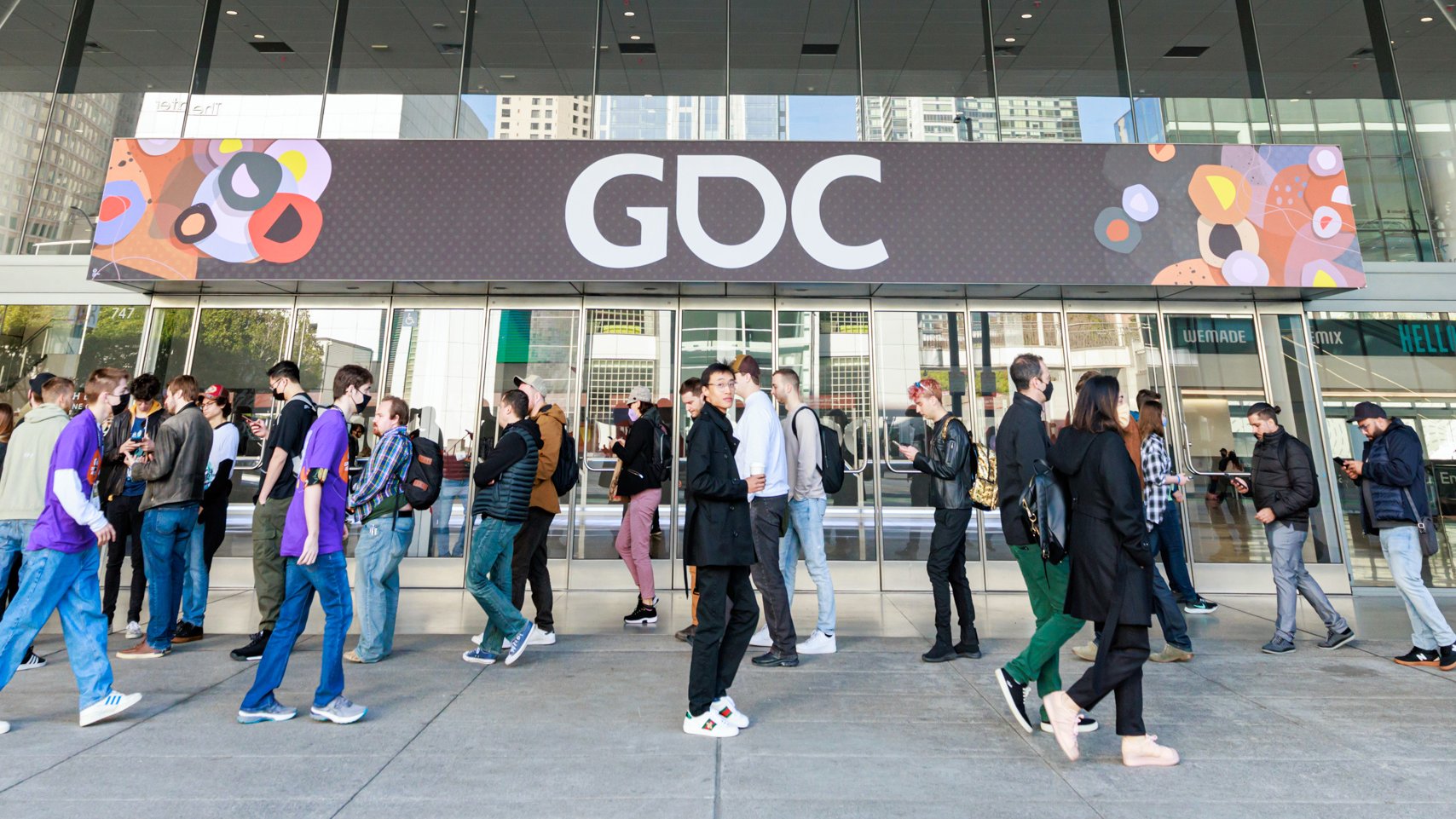GDC 2022: The most important announcements for game fans
Faster game development, better upscaling tech and PSVR 2 are among the highlights

The Game Developers Conference (GDC) returned to being an in-person event this year after a few online-only iterations during the height of the COVID-19 pandemic. Thousands of game developers from around the world converged in San Francisco’s Moscone Center to participate in the long-running event. Despite the present circumstances, the show was mostly a return to form, with devs hosting and attending a number of presentations regarding game development and other important game industry business.
Though GDC is a great venue for developers to meet and learn from each other, historically it's rarely a source of big game reveals and announcements. Unless you’re super into the ins and outs of game development, GDC isn’t something for the average fan to get excited about.
However, this year’s GDC saw a number of announcements that gaming enthusiasts should keep an eye on. Though the ramifications of these reveals may not be felt soon, they will no doubt have an impact on the games you play in the months and years to come.
Here are the biggest gaming news stories from GDC 2022.
Microsoft and Amazon want devs to use their cloud servers
Like many of us, a good portion of the game industry shifted to working remotely during the pandemic. In some cases, devs brought their development rigs home so they could continue creating games. This is part of the reason we’ve seen so many game delays: Developing big games in concert with big teams from one’s home isn’t easy.
To that end, Microsoft and Amazon pitched their respective cloud development platforms to developers during GDC 2022. As The Verge reports, both companies have tried to lure businesses to switch to the cloud in recent years. With the present challenges developers face, Amazon and Microsoft are pushing hard to get devs to create games on their cloud servers.
Amazon launched AWS for Games during GDC 2022, while Microsoft will launch Azure Game Development Virtual Machine in the future. Both solutions will help developers create and test their games on powerful computers in the cloud. Azure, for example, supports tools like Unreal Engine, Blender, Visual Studio, Parsec and more. The tools in question not only minimize the need for physical test rigs but also make it possible to create games from almost anywhere with a decent Internet connection. Many games are already being built with them: 90 percent of the largest game companies are building their games with AWS, according to Amazon, whereas Microsoft says all of its first-party games are using Azure PlayFab.
Sign up to get the BEST of Tom's Guide direct to your inbox.
Get instant access to breaking news, the hottest reviews, great deals and helpful tips.
Cloud game development should make it possible for developers to ship games a bit quicker, and these tools may expand the scope of what small teams can accomplish by a significant margin. It may be some time before we see the benefits of cloud-based game development, but if it leads to getting games faster, then the wait will be worth it.
PSVR 2 gets secret demo at GDC
Sony officially announced PSVR 2 earlier this year during CES 2022. Since then, the company unveiled the VR headset’s design and its impressive specs. We’ve yet to hear word on pricing or a release date, but according to rumors, Sony has let some folks try PSVR 2 in private meetings at GDC 2022.
As we reported, former Valve writer Chet Faliszek tweeted that he played PSVR 2 at GDC and apparently liked the experience. He even thanked Sony’s Shuhei Yoshida and Greg Rice for giving him the opportunity to test the upcoming VR headset.
Had one of those VR moments today playing in the new PSVR2 hmd… You know where the world just feels different when you return? Sooooo good… thanks @yosp and @GregRicey for the demo and chat.March 24, 2022
The tweet in question landed on ResetEra where a user said it sounded like hyperbole, as PlayStation Lifestyle reports. A Truant Pixel developer responded and said Faliszek’s statement wasn’t hyperbolic at all. The dev said he was under embargo and couldn’t reveal much, but divulged that Sony has constructed a superior headset to the original PSVR.
PSVR 2 will feature 4K OLED screens that support HDR, a 90-120Hz refresh rate, an increased 110-degree field of view, headset feedback and improved tracking via built-in cameras. It will also have its own dedicated controllers. Best of all, the headset will only require a single wire. That fact alone is reason enough to celebrate as it should make PSVR 2 easier (and safer) to use than the multi-wired mess that was the original PSVR.
It’s still unclear when the public will be able to buy PSVR 2. But if Sony is confident enough to let developers try the headset, then perhaps we’ll see it in the near future.
Intel’s XeSS will rival AMD’s FSR and Nvidia’s DLSS
Intel announced Xe Super Sampling (XeSS) over a year ago. The company hasn’t revealed much about its rival to AMD’s FSR and Nvidia’s DLSS since then, but during GDC, it unveiled a couple of impressive XeSS tech demos. The demos were running on an Intel Arc GPU at 4K and built using Unreal Engine with DX12 enabled.
For those who may not know, super sampling renders games at 1080p and then upscales them to 4K via machine learning. This can improve performance while preserving image quality. What distinguishes XeSS from Nvidia’s Deep Learning Super Sampling (DLSS) is that it supports GPUs from different vendors and isn’t limited to Intel’s own upcoming Arc GPUs.
XeSS will offer five upscaling solutions. This includes Ultra performance, performance, balanced, quality and ultra quality. You can think of these as the fidelity (higher resolution) and performance (higher framer per second) options seen in PS5 and Xbox Series X titles.
Gaming studios such as IO Interactive, Kojima Productions, 505 Games, Ubisoft, Techland will be among the first studios to use XeSS in their games. Laptops packing Intel Arc GPUs will begin launching before the end of March. This means that we should see games that support XeSS sooner rather than later.
Other news tidbits
Not to be outdone by Intel, AMD announced FSR (FidelityFX Super Resolution) 2.0, the next version of its own algorithmic upscaler, which the company claims will double the frame rate of games like Deathloop. Interestingly enough, FSR 2.0 will run on some Nvidia GPUs like the RTX 1070 (and above). FSR 2.0 is also coming to Xbox consoles, though AMD can’t say when developers may start to use the technology.
Nvidia’s new Omniverse virtual development platform will make it easier for devs to remotely do things like share assets, sort asset libraries, collaborate and deploy AI to animate characters’ facial expressions in real-time. “Omniverse provides a powerful development pipeline that addresses the challenges of doing business in today’s world,” said Frank DeLise, vice president of Omniverse at NVIDIA.
Like Microsoft and Amazon's cloud game dev tech, Nvidia's Omniverse may help game devs build bigger, better games more efficiently—and that's good news for anyone who loves games.

Tony is a computing writer at Tom’s Guide covering laptops, tablets, Windows, and iOS. During his off-hours, Tony enjoys reading comic books, playing video games, reading speculative fiction novels, and spending too much time on X/Twitter. His non-nerdy pursuits involve attending Hard Rock/Heavy Metal concerts and going to NYC bars with friends and colleagues. His work has appeared in publications such as Laptop Mag, PC Mag, and various independent gaming sites.
